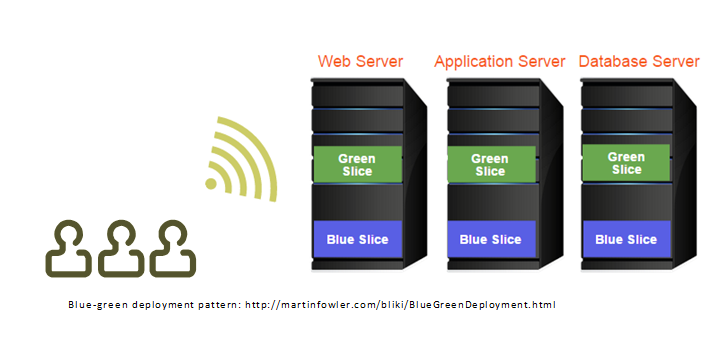The design of the Remain Software solution incorporates a multi staged deployment setup, which involves a base application environment feeding two alternating application environments. Only one of the alternating environments is active allowing the non-active application environment to be updated, as often as needed, with the most current application components. At any point an application switch can be triggered, which promotes the non-active application to the active state.
“Too often it is not possible to directly deploy to a live application. Locked or in-use files will most likely prevent this and fail the deployment attempt. Working close with our customers we have developed a deployment strategy which allows incremental updates to be applied to an application without disrupting the running application environment.” – says Walter Ridderhof, solution architect at Remain Software. “Our continuous application deployment functionality was originally suited for LANSA application environments but our solution can be applied to any application deployment scenario that has to deal with locked or in-use application files. Looking at the bigger picture the TD/OMS continuous application deployment can be seen as a variant of the ‘blue-green continuous deployment pattern’ where the module can be utilized in a deployment pipeline that requires an automated switch between a pre- and live-production environment”, he continues.

Blue-Green Deployments
Pattern: Deploy software to a non-production environment (blue) while production continues to run. Once it’s deployed and “warmed up”, switch production (green) to non-production and blue to green simultaneously.
Anti-patterns: Production is taken down while the new release is applied to production instance(s).
The TD/OMS improvement adds even more value to TD/OMS deployment module. Remain Software solution has been known for its strong deployment support allowing quick and reliable software distribution to any target or system (IBM i, Windows, Unix, Linux, Mac, Solaris and others on request). The fully automated and continuous deployment will enable customers to increase their productivity with short deploy cycles and no downtime. Deployment automation and centralization supported by TD/OMS also involves less people, which results in fewer errors and high quality software, and much less coordination and management needed for the deployment process.
This latest development is a preannouncement of an upcoming TD/OMS upgrade to version 7 scheduled for early 2015.
Read more about TD/OMS, IBM i application life cycle management solution.

